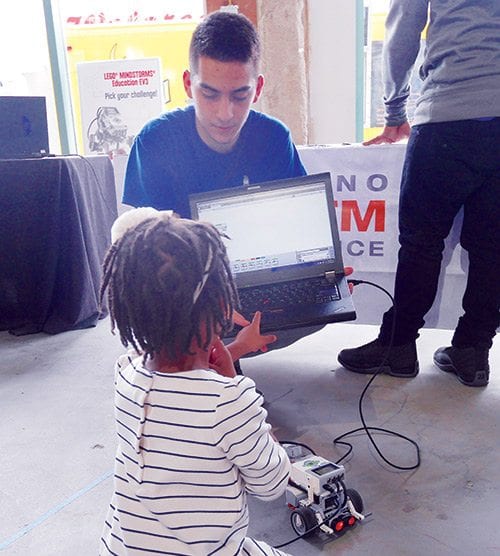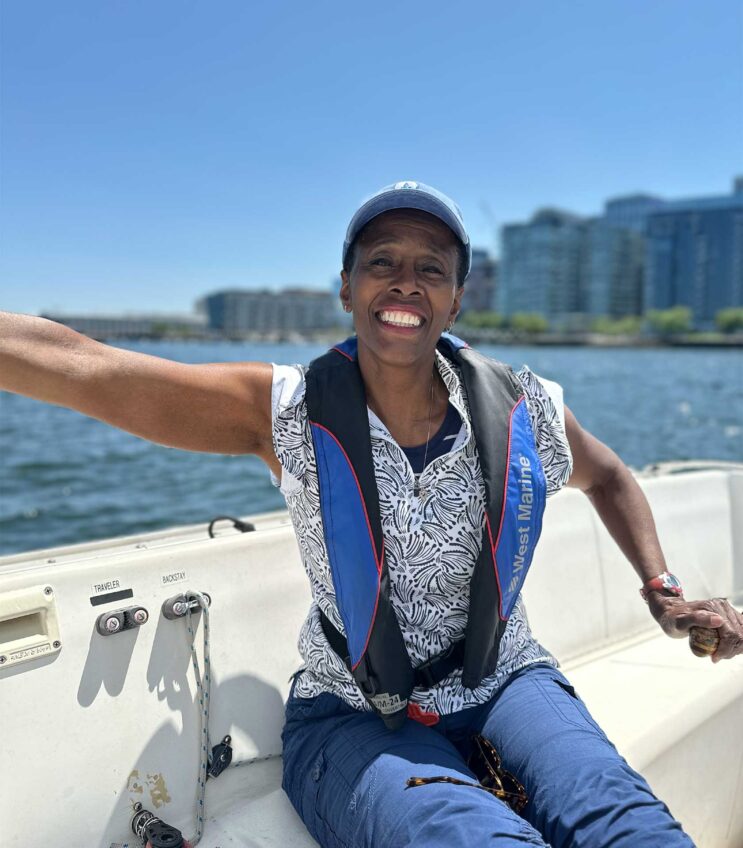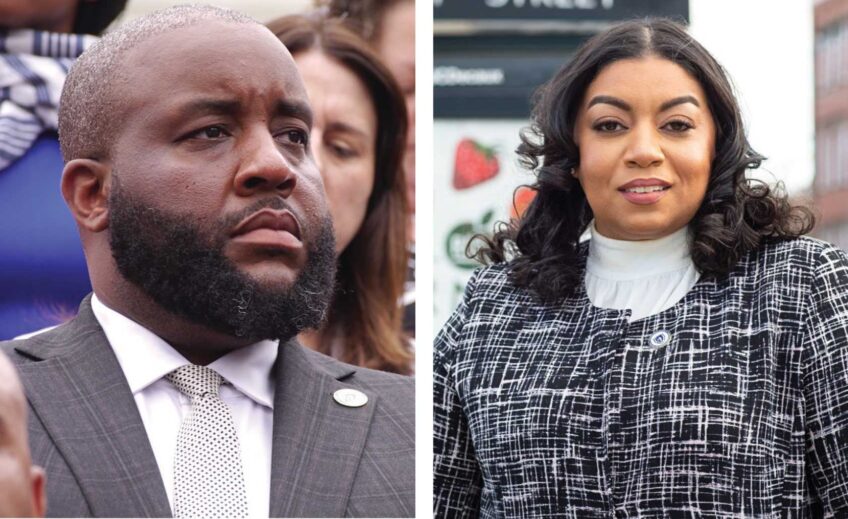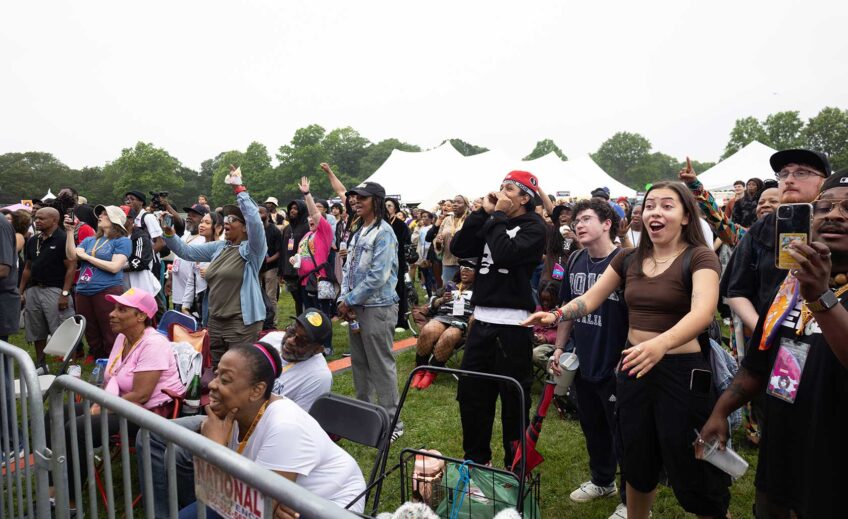BPS open house highlights 10-year-plan process
Parents, students turn out for weekend sessions at Bolling Bldg.

Boston Public Schools Superintendent Tommy Chang last weekend shared some of his department’s efforts to acknowledge and address systemic racism.
“This is the issue that we have to tackle in this city,” Chang said during a panel discussion on interrupting racism, part of a two-day open house hosted by Build BPS, the planning initiative launched by Boston Public Schools last year to develop a 10-year master education and facilities plan.
On the web
Build BPS: www.bostonpublicschools.org/buildbps
BPS “10 Big Ideas” report + schedule of upcoming public discussion sessions: http://bostonpublicschools.org/financialplan
Race Forward video on systemic racism: http://bit.ly/KFUH5z
CNN Video: “Kids on Race: The Hidden Picture”: http://bit.ly/1AF9Lc5
The panel on racism was moderated by Atyia Martin, the city of Boston’s chief resilience officer. She showed a CNN report on white-black racism and children and a video by Race Forward on systemic racism. She drew panelists and audience members to share thoughts and feelings on what racism is and what we can do to tackle it.
“The issue is huge, it’s screaming … it’s right there in our faces. Can we stop talking about it, and just do it?” said panelist Charmaine Arthur, director of community programs at Freedom House and parent of two black sons in BPS schools. “I can’t teach my children to be color blind — we don’t live in a color blind society. We have to acknowledge it, own it, confront it. Change comes with being uncomfortable.”
City Councilor Tito Jackson, in the audience, helped clarify systemic racism in contrast to individual racist views and behaviors.
“We need to draw the distinction,” Jackson said. “It’s bad if someone calls me an n-word to my face. But it is much worse for me if my housing or my interactions with police or my education system denote that that word is true.”
An Asian-American attendee noted that racism toward Asians is often invisible, prompting Chang to reflect on his own life experience.
A personal perspective
In his childhood, Chang’s cultural and linguistic identity was not affirmed or sustained, he said, as his parents pushed him to stop speaking Mandarin and master English to escape the ill treatment they knew first-hand that immigrants often endure.
Now, Chang’s department is placing a priority on developing culturally- and linguistically-sustaining education practices. He described some other steps BPS is taking to dismantle racial divisions: removing barriers in some schools between fourth-grade Advanced Work Classes, which skew toward white and Asian students, and non-AWC classes that more closely reflect BPS’s black and Latino populations; and internally, hitting issues head on with deep and serious staff conversations about identity, race and white privilege.
“We have to break the systemic part down,” he said. “It’s been hard; it’s a process that’s continuing.”
The Oct. 29-30 event, held in the Bruce C. Bolling Building, was an opportunity for BPS families and other stakeholders to learn about the 10-year master plan in progress.
Visitors browsed interactive exhibits illustrating visions for “classrooms of the future” and issues such as budget deficits. Discussion sessions addressed such topics as health and wellness, innovation, summer options as career pathways, and ways to increase the student voice in designing BPS’s future. For children and teens, there were chess and math tournaments, literacy games and reading corners.
On Sunday, the area most crowded by far was the large open space given over to educational games and physical play.
Tamara Blake-Canty watched as her 4-year-old daughter got a lesson in robotics from Ardit Briskaj, a junior at Boston International High School. Briskaj patiently guided the little girl in pressing the right keys to program a small robot to move in various directions.
“Seeing her involved in STEM activities — it’s good exposure,” said Blake-Canty, who is principal of the Russell K-8 School in Dorchester. “It’s not a field highly sought by people of color, especially women.”
Long-term goals
A panel discussion on BPS’s long-term financial plan outlined the key spending areas in the school budget today and the 10 “big ideas” for cutting spending that an advisory committee has generated. These cost-cutting ideas were covered recently in the Banner and can be seen in a report available on BPS’s website at http://bostonpublicschools.org/financialplan.
Sam Tyler, president of the Boston Municipal Research Bureau, noted that the school budget is already 35 percent of the city of Boston’s overall budget. Altering the BPS “footprint” — meaning the number and types of schools and the number of programs — could help cut other costs, he said, as fewer schools would mean fewer teachers and bus routes.
“It’s a controversial and emotional issue … but I think the facility issue is something we really need to address,” Tyler said. “That will affect salaries and transportation and other factors that drive school spending.”
Charlestown High School Headmaster Will Thomas, however, raised the idea of not just working to reduce the budget, but making a serious effort to increase revenue.
“We’re constantly asked to do more with less,” Thomas said. “You can’t just say we’re going to cut, cut, cut. We need to look at what other ways we can add, add, add to the budget.”
Build BPS is releasing a series of preliminary reports at School Committee meetings this fall, and by December expects to present drafts of a final report containing options and recommendations for the 10-year plan. For more information, visit www.bostonpublic schools.org/buildbps.






